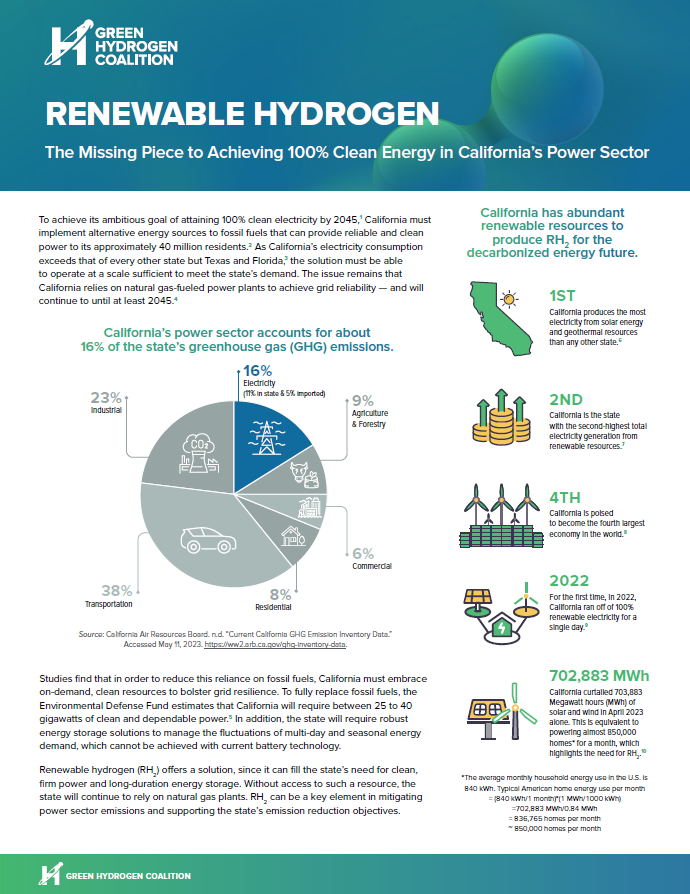Build awareness of the decarbonization and public health benefits that renewable and green hydrogen can provide by reading and sharing these resources.

Understanding the Climate Impacts of Hydrogen Emissions
The climate benefits from a well-regulated, clean, and renewable hydrogen economy outweigh the warming impact of hydrogen emissions, and we can maximize its benefits by minimizing hydrogen emissions and advancing best practices. In collaboration with the Environmental Defense Fund, learn more about hydrogen emissions by reading our latest educational factsheet.
Green Ammonia: Fueling Job Transition and Deep Decarbonization in California
Green ammonia is produced by combining nitrogen with renewable hydrogen, made from renewable feedstocks such as water, renewable electricity, and/or organic waste. As a carbon-free globally traded commodity, green ammonia will enable California to leverage its abundant renewable feedstocks to help fulfill the growing international demand for renewable hydrogen and renewable ammonia.
Green Hydrogen: A Key Resource for California’s Clean Energy Transition
The GHC defines “green hydrogen” as hydrogen that is produced from non-fossil fuel feedstocks and has climate integrity. Many benefits can be realized from the development of a green hydrogen economy at scale in California, such as air quality improvements, a clean and reliable power sector, job creation, organic waste reduction, and economic growth potential.
The Importance of Dedicated Green Hydrogen Pipeline Infrastructure
It is imperative that California engages in comprehensive long-term gas planning that includes establishing a 100% green hydrogen-dedicated pipeline system designed to meet the requirements of the state’s decarbonization goals.
Renewable Hydrogen: The Missing Piece to Achieving 100% Clean Energy in California’s Power Sector
Without access to renewable hydrogen, California will continue to rely on natural gas plants. Renewable hydrogen can be a key element in mitigating power sector emissions and supporting the state’s emission reduction objectives.





